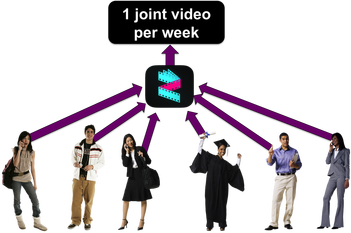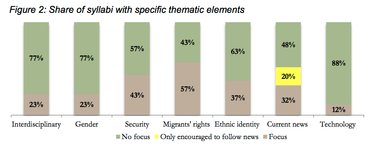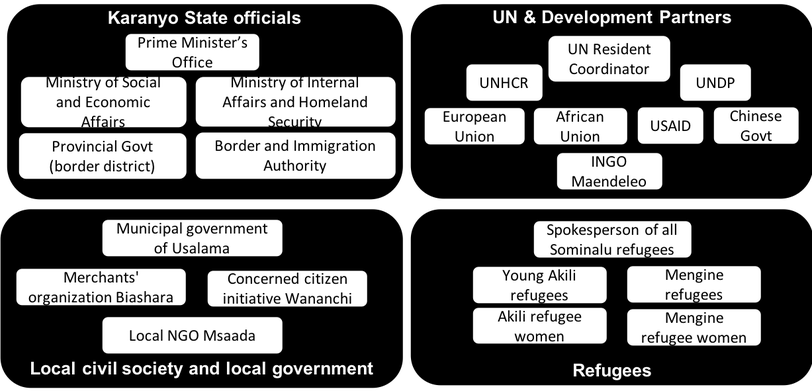|
On this page, I share some experiences on the use of technology in the class room, student-centered active learning activities and provide some information on my teaching-related publications.
|
Role-play Simulation on Large InFlows of RefuGEES |

For the course on Mobility and Forced Migration at the New School's Graduate Program in International Affairs and Global Refugee Regimes at Columbia Law School, I developed a one-class role-play simulation, during which students engage in stakeholder negotiations on how to respond to a large flow of refugees between two fictional African countries. Each students gets a role with a corresponding role sheet and instructions for a briefing memo. Through this exercise, students acquire in-depth knowledge of arguments regarding granting and restricting refugees’ freedom of movement, civil and economic rights. Students learn about the possibilities to transition from humanitarian relief to sustainable development programming, the role of economic policies, human rights and public international law, security questions and securitization moves, political effects and determinants of refugee policies and the role of international relations and donor-recipient country relations.
While it remains to be seen whether a student evaluation’s prediction will hold true that “the intricacies of this experience will be memorable in 10, 15 years whereas some of the other more standard class instruction may not”, three observations prompt the conclusion that this role-play simulation increases student learning.
While it remains to be seen whether a student evaluation’s prediction will hold true that “the intricacies of this experience will be memorable in 10, 15 years whereas some of the other more standard class instruction may not”, three observations prompt the conclusion that this role-play simulation increases student learning.
- Participatory observation from five conducted simulations, including the debriefings during which students and the instructor discuss the validity and determinants of arguments, reveals that students display a high level of comprehension of the major arguments and policy solutions and are able to apply them to the discussion.
- The preparation for the simulation led to a 60% increase in students’ response papers for the session with significantly more nuanced arguments, when compared with sessions on refugee camps in the same or similar courses in the previous years, when no such simulation was offered, as well as when compared with lecture-discussion-style sessions during the same course.
- Furthermore, in the universities’ official student evaluations, as well as in a specific survey soliciting feedback on the simulation exercise, students self-assess across the board that the simulation is a very effective and engaging learning tool. For example, one student observes that “applying the arguments from the readings to a ‘real-life’ situation helped me understand the arguments better, and contextualize them”, while another highlights, “Through having to enact them, different aspects from the readings that seemed clear beforehand are suddenly called into question and require more thinking.”




